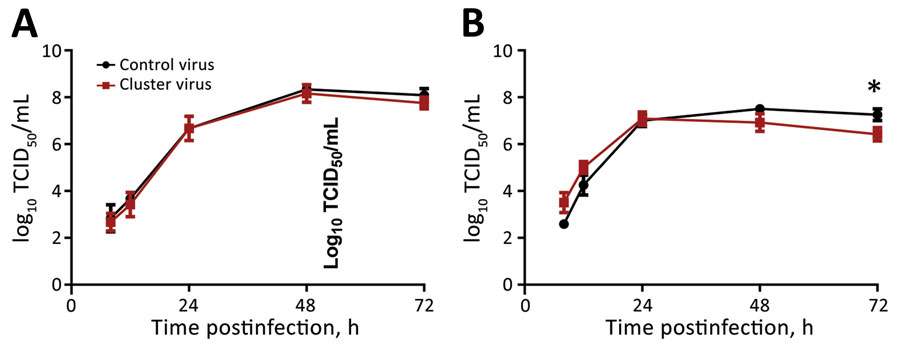Volume 27, Number 7—July 2021
Dispatch
Cluster of Oseltamivir-Resistant and Hemagglutinin Antigenically Drifted Influenza A(H1N1)pdm09 Viruses, Texas, USA, January 2020
Figure 2

Figure 2. In vitro replicative fitness of influenza A(H1N1)pdm09 cluster and control viruses. The growth kinetics of the 2 viruses, the cluster virus A/Texas/137/2020, and A/New York/19/2020, were assessed using MDCK (A) and hCK (B) cell lines. These viruses have identical HA and NA amino acid sequences, except the H275Y substitution in NA. Cell monolayers were infected at a multiplicity of infection of 0.002 and the supernatants were harvested at 8, 12, 24, 48, and 72 hours postinoculation. Infectious virus titers were determined and expressed as log10 TCID50/mL. The lower limit of virus detection is 1.75 log10 TCID50/mL. Data are shown as mean +SD; we used the unpaired t-test with Welch’s correction for statistical comparisons (asterisk indicates p˂0.05). The hCK cell line was kindly provided by Dr. Y. Kawaoka (University of Wisconsin, Madison, WI, USA) per material transfer agreement. HA, hemagglutinin; hCK, humanized MDCK cells; NA, neuraminidase; TCID50, median tissue culture infectious dose.
1These authors contributed equally to this article.